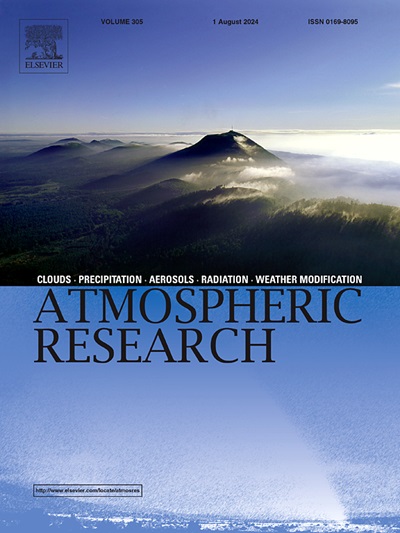Higher-resolution data improves deep learning-based precipitation nowcasting
IF 4.5
2区 地球科学
Q1 METEOROLOGY & ATMOSPHERIC SCIENCES
引用次数: 0
Abstract
Accurate and fine-grained precipitation nowcasting holds paramount importance for weather-dependent decision-making and is facing escalating expectations and challenges. While researchers have notably advanced precipitation nowcasting using deep learning (DL) models with larger sizes and more complicated structures, there is scarce research exploring the potential improvement from employing radar data with higher spatial resolutions—a hundred-meter scale rather than a kilometer scale. To evaluate the improvement of higher-resolution data, two U-Net architecture-based models, one larger and another smaller, were designed and trained with radar data at different spatial resolutions—1000 m, 500 m, and 100 m. Their effectiveness was examined by comparison to two baseline models. The models trained with diverse resolutions of data underwent comparative evaluation through two specific precipitation cases. The results unveil a positive correlation between the precipitation nowcasting performance and the spatial resolution of radar data. Models trained with higher-resolution data demonstrate superior forecasting accuracy, reduced bias, and enhanced spatial alignment between predictions and observations. Higher-resolution data empowers DL models to capture boundaries and local-scale patterns of convective systems more accurately, thereby improving the performance in precipitation nowcasting. More importantly, the comparison indicates that to further promote the performance of DL-based precipitation nowcasting, improving data resolution is more efficient than expanding model size. The use of high-resolution data diminishes computational and development costs by concurrently reducing the size of DL models, underscoring pragmatic benefits for related services. Given limited resources, employing higher-resolution data is recommended for priority consideration over larger-size models.
求助全文
约1分钟内获得全文
求助全文
来源期刊

Atmospheric Research
地学-气象与大气科学
CiteScore
9.40
自引率
10.90%
发文量
460
审稿时长
47 days
期刊介绍:
The journal publishes scientific papers (research papers, review articles, letters and notes) dealing with the part of the atmosphere where meteorological events occur. Attention is given to all processes extending from the earth surface to the tropopause, but special emphasis continues to be devoted to the physics of clouds, mesoscale meteorology and air pollution, i.e. atmospheric aerosols; microphysical processes; cloud dynamics and thermodynamics; numerical simulation, climatology, climate change and weather modification.
 求助内容:
求助内容: 应助结果提醒方式:
应助结果提醒方式:


